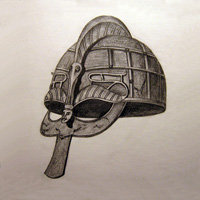
This blog is on Vikings and for Vikings. Warriors and traders from Nordic countries reached as far as North America, leaving lasting marks of their presence everywhere. In battle, Vikings feared nothing, eager to join Odin in his hall. They knew that valkyries chose who would die and become one of the einherjar in Valhalla.
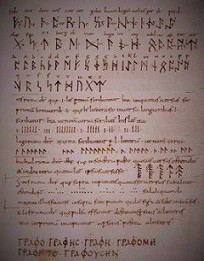 The idea of writing phonetically is probably the first thing people hear when they delve into the problem of having a runic inscription. Vikings used runes phonetically, they say, so should we, if we want to get something authentic, do the same?
The idea of writing phonetically is probably the first thing people hear when they delve into the problem of having a runic inscription. Vikings used runes phonetically, they say, so should we, if we want to get something authentic, do the same?
A few points have to be cleared up with respect to the way runes were used in the early Middle Ages. Where does the whole notion of ‘writing phonetically’ come from? This is simply another way to state that Old Norse inscriptions carved with the Younger Futhark runes did not have a stable spelling.
This is not something unique or characteristic for the Viking Age Old Norse language. Spelling variants are found throughout the ancient literatures. Even today we have orthographical differences between British English and US English. [continue reading…]
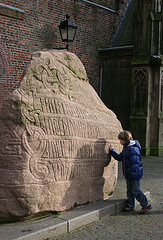 In my previous post on How to Translate Into Runes Correctly I wrote that no such thing as a correct representation of an English or Old Norse text in Norse runes can be achieved in practice. I know it sounds quite disappointing. Let’s consider what can be done about that. The practical advice I gave at the end of my text was to find a fragment of an existing Viking Age Younger Futhark inscription and use it for your tattoo, carving or engraving. I also promised to find interesting fragments of the Viking Age inscriptions for you. That’s what I plan to do, but before I post these I decided to cover some options that might seem to be totally discarded in my previous article. [continue reading…]
In my previous post on How to Translate Into Runes Correctly I wrote that no such thing as a correct representation of an English or Old Norse text in Norse runes can be achieved in practice. I know it sounds quite disappointing. Let’s consider what can be done about that. The practical advice I gave at the end of my text was to find a fragment of an existing Viking Age Younger Futhark inscription and use it for your tattoo, carving or engraving. I also promised to find interesting fragments of the Viking Age inscriptions for you. That’s what I plan to do, but before I post these I decided to cover some options that might seem to be totally discarded in my previous article. [continue reading…]
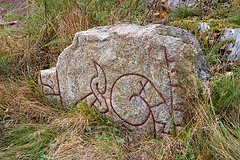 You cannot translate anything into runes, full stop. Runes are not a language, they are signs devised to represent the sounds of a language, the same way as letters. You also cannot represent anything in runes correctly. No kind of correctness standard may be applied to the Viking Age runic inscriptions, at least in the current state of research.
You cannot translate anything into runes, full stop. Runes are not a language, they are signs devised to represent the sounds of a language, the same way as letters. You also cannot represent anything in runes correctly. No kind of correctness standard may be applied to the Viking Age runic inscriptions, at least in the current state of research.
Lewis Carroll while travelling in Russia liked the word защищающихся (meaning ‘those who protect themselves’ as he noted in his diary) and wrote it down in English: zаshtshееshtshауоushtshееkhsуа. The Russian word has 12 letters, the English one as many as 30. Did Carroll write it correctly? [continue reading…]
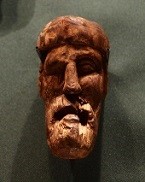 Hávamál or Sayings of the High One is part of the Elder Edda also known as Poetic Edda. The high one is Odin, and thus all the sayings of this Eddaic poem are attributed to the Allfather. In the original Old Norse the verses are composed in the meter called Ljóðaháttr, which in the Viking Age was associated with wisdom poetry. Practical advice and deep insights as for what it means to be human and live in this world make this little book a gem of the Norse literature. I admire it and today I would like to share with you a few of my favourite quotations from it. [continue reading…]
Hávamál or Sayings of the High One is part of the Elder Edda also known as Poetic Edda. The high one is Odin, and thus all the sayings of this Eddaic poem are attributed to the Allfather. In the original Old Norse the verses are composed in the meter called Ljóðaháttr, which in the Viking Age was associated with wisdom poetry. Practical advice and deep insights as for what it means to be human and live in this world make this little book a gem of the Norse literature. I admire it and today I would like to share with you a few of my favourite quotations from it. [continue reading…]
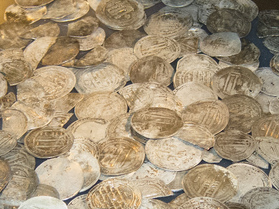 The Silverdale hoard and the Vale of York hoard were discussed a lot both in the press and the blogs. However, there are at least 10 more Viking hoards that have been discovered during the last 10 years, which you probably have not heard about.
The Silverdale hoard and the Vale of York hoard were discussed a lot both in the press and the blogs. However, there are at least 10 more Viking hoards that have been discovered during the last 10 years, which you probably have not heard about.
1. September 2012, Bornholm, Denmark. A Viking Age treasure consisting of 152 silver Arab and Persian coins was found on the island of Bornholm in the Baltic Sea. The treasure dates back to 854 AD. About 20 coins are intact, while others are cut into pieces, which is very typical for the period, since the payment was based on the weight of silver, not on the quantity of coins. The total weight of the treasure is about 250 grams. The first coins were found by an amateur archeologist. The museum of Bornholm conducted subsequent excavations. [continue reading…]
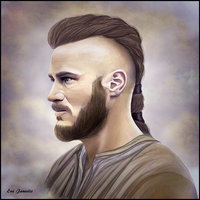 Lately, I have been receiving a lot of questions concerning Viking hairstyles, all inspired by Travis Fimmel’s fancy haircut in The History Channel’s Vikings. A recent blog post Ragnar Lothbrok’s Viking Style by Nancy Marie Brown inspired me to delve deeper into the matter. The present article will quote the original sources on Norse male hairstyles during the Viking Age, then it will give a translation and interpretation of each, and finally it will offer a few thoughts on whether Ragnar’s haircut in Vikings looks historically accurate.
Lately, I have been receiving a lot of questions concerning Viking hairstyles, all inspired by Travis Fimmel’s fancy haircut in The History Channel’s Vikings. A recent blog post Ragnar Lothbrok’s Viking Style by Nancy Marie Brown inspired me to delve deeper into the matter. The present article will quote the original sources on Norse male hairstyles during the Viking Age, then it will give a translation and interpretation of each, and finally it will offer a few thoughts on whether Ragnar’s haircut in Vikings looks historically accurate.
We have two witnesses as for the hair of the Norsemen in early Middle Ages:
- Leo the Deacon (born ca. 950). In his History, written about AD 989—992, Leo describes how John I Tzimiskes (Byzantine emperor) met Sviatoslav (prince of Kievan Rus) in July 971. Whether Leo himself was present at the meeting, is unclear.
- Ælfric of Eynsham (also born ca. 950). In his Letter to Edward, written about AD 1000, partly in rhythmical alliterative prose, Ælfric speaks about English people who adopt heathen Danish customs, which he considers to be shameful. [continue reading…]
 The idea of writing phonetically is probably the first thing people hear when they delve into the problem of having a runic inscription. Vikings used runes phonetically, they say, so should we, if we want to get something authentic, do the same?
The idea of writing phonetically is probably the first thing people hear when they delve into the problem of having a runic inscription. Vikings used runes phonetically, they say, so should we, if we want to get something authentic, do the same?

 In my previous post on
In my previous post on  You cannot translate anything into runes, full stop. Runes are not a language, they are signs devised to represent the sounds of a language, the same way as letters. You also cannot represent anything in runes correctly. No kind of correctness standard may be applied to the Viking Age runic inscriptions, at least in the current state of research.
You cannot translate anything into runes, full stop. Runes are not a language, they are signs devised to represent the sounds of a language, the same way as letters. You also cannot represent anything in runes correctly. No kind of correctness standard may be applied to the Viking Age runic inscriptions, at least in the current state of research. Hávamál or Sayings of the High One is part of the Elder Edda also known as Poetic Edda. The high one is Odin, and thus all the sayings of this Eddaic poem are attributed to the Allfather. In the original Old Norse the verses are composed in the meter called Ljóðaháttr, which in the Viking Age was associated with wisdom poetry. Practical advice and deep insights as for what it means to be human and live in this world make this little book a gem of the Norse literature. I admire it and today I would like to share with you a few of my favourite quotations from it.
Hávamál or Sayings of the High One is part of the Elder Edda also known as Poetic Edda. The high one is Odin, and thus all the sayings of this Eddaic poem are attributed to the Allfather. In the original Old Norse the verses are composed in the meter called Ljóðaháttr, which in the Viking Age was associated with wisdom poetry. Practical advice and deep insights as for what it means to be human and live in this world make this little book a gem of the Norse literature. I admire it and today I would like to share with you a few of my favourite quotations from it.  The Silverdale hoard and the
The Silverdale hoard and the  Lately, I have been receiving a lot of questions concerning Viking hairstyles, all inspired by Travis Fimmel’s fancy haircut in The History Channel’s Vikings. A recent blog post
Lately, I have been receiving a lot of questions concerning Viking hairstyles, all inspired by Travis Fimmel’s fancy haircut in The History Channel’s Vikings. A recent blog post